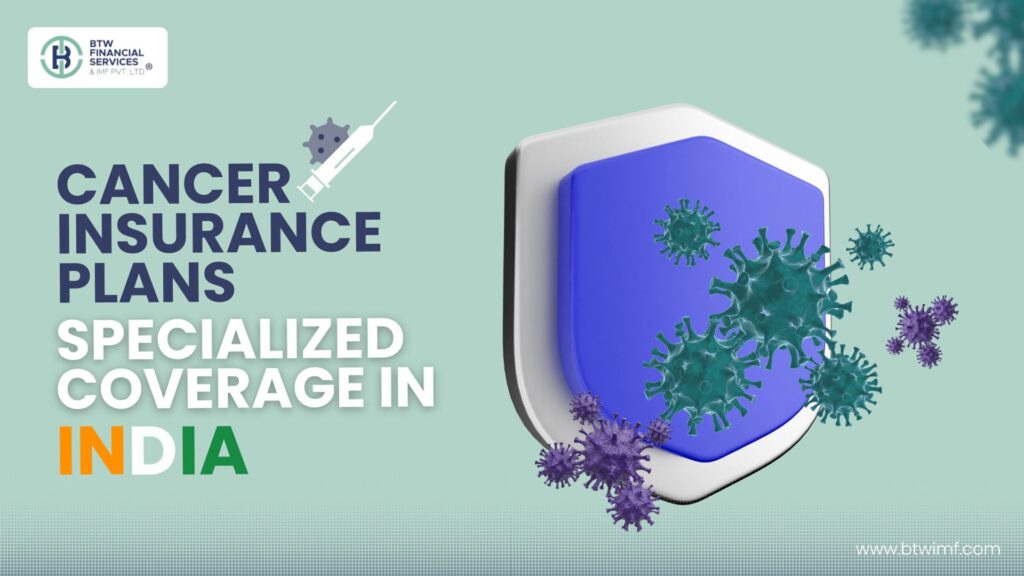Cancer Insurance Plans: Specialized Coverage in India
Summary:
- Purpose: Financial protection against high cancer treatment costs
- Key Features:
- Lump Sum Payment or Indemnity Plans
- Coverage for all cancer stages
- Riders for additional coverage
- Waiver of Premium and Second Opinion benefits
- Benefits:
- Financial support for treatment
- Income benefit during treatment
- Tax benefits under Section 80D
- Key Considerations:
- Assess personal risk
- Evaluate coverage and exclusions
- Insurer’s reputation and claim settlement ratio
- Leading Providers:ICICI Lombard, Bajaj Allianz, HDFC Aergo, Niva Bhupa, Aditya Birla etc.
Table of Contents
- Introduction
- Key Features of Cancer Insurance Plans in India
- Benefits of Cancer Insurance Plans
- Eligibility Criteria and Waiting Period
- Factors Determining Premiums
- Tax Benefits
- Leading Providers of Cancer Insurance in India
- Choosing the Right Cancer Insurance Plan in India
- Common Exclusions and Limitations
- Claim Process for Cancer Insurance
- Conclusion
Introduction
Cancer insurance plans are specialized health insurance products designed to provide financial protection against the high costs associated with cancer diagnosis, treatment, and care. Given the increasing incidence of cancer in India, coupled with the exorbitant costs of treatment, having a dedicated cancer insurance plan can be a prudent financial decision.
These plans can help mitigate the financial burden, ensuring that individuals and their families can focus on recovery without worrying about the costs.
Key Features of Cancer Insurance Plans in India
1. Coverage Types
- Lump Sum Payment Plans:
- Definition: Upon diagnosis of cancer, the insurer pays a lump sum amount, which can be used as per the policyholder’s discretion.
- Advantage: Immediate financial assistance to cover any type of expense, not limited to medical bills.
- Indemnity Plans:
- Definition: Reimburse actual medical expenses related to cancer treatment up to the sum insured.
- Advantage: Direct reimbursement for medical costs, reducing out-of-pocket expenses.
- Riders:
- Definition: Can be attached to existing life or health insurance policies, providing additional cancer coverage.
- Advantage: Enhances existing insurance coverage without purchasing a separate policy.
2. Sum Insured Options
- Ranges from a few lakhs to crores, depending on the insurer and plan chosen.
- Policyholders can choose a sum insured based on their financial situation, medical history, and the cost of living in their area.
3. Policy Term
- Typically ranges from1 year, we have to renew every year.
- The choice of policy term depends on the individual’s age at the time of purchase and their insurance needs.
Benefits of Cancer Insurance Plans
- Financial Support: Helps manage the high costs of cancer treatment, including chemotherapy, surgery, hospital stays, and follow-up care.
- Income Benefit: Some plans offer a monthly income to compensate for the policyholder’s potential loss of income during treatment, ensuring family expenses are covered.
- Waiver of Premium: Future premiums may be waived upon diagnosis, ensuring coverage continuity without additional cost to the policyholder.
- Second Opinion: Some insurers cover the cost of seeking a second medical opinion, ensuring policyholders can explore the best treatment options.
- Wellness and Preventive Care: Certain plans may offer coverage or discounts for preventive screenings and wellness programs.
Eligibility Criteria and Waiting Period
- Age Limit: Typically ranges from 18 to 65 years for new policy purchases. Some plans may have different age limits for entry.
- Waiting Period: A standard waiting period of 90 days to 1 year before claims can be made. This varies by insurer and plan.
- Survival Period: After diagnosis, the policyholder must survive a specified period (e.g., 7 days) to be eligible for the lump sum payout.
- Pre-existing Conditions: May be covered after a certain period (e.g., 2-4 years) or with an additional premium, depending on the insurer’s policies.
Factors Determining Premiums
- Age: Premiums increase with age due to higher risk.
- Gender: Females might have different premium rates due to gender-specific cancers.
- Smoking Status: Smokers are typically charged higher premiums due to increased health risks.
- Sum Insured Chosen: Higher sums insured result in higher premiums.
- Policy Term: Longer policy terms can lead to higher overall premiums.
- Pre-existing Conditions: Presence of pre-existing conditions may increase premiums or affect eligibility.
Tax Benefits
Premiums paid for cancer insurance plans are eligible for tax deductions under Section 80D of the Income Tax Act, 1961, subject to specified limits and conditions.
Leading Providers of Cancer Insurance in India
- ICICI Lombard
- Bajaj Allianz.
- HDFC Aergo
- Niva Bhupa
- Aditya Birla
First Always seek guidance from a licensed insurance advisor for the right coverage.
Choosing the Right Cancer Insurance Plan in India
- Assess Your Risk: Consider family history, lifestyle factors, and occupational hazards.
- Evaluate Coverage: Ensure the plan covers all stages of cancer (e.g., early, major, and critical).
- Check Exclusions: Understand what is not covered (e.g., pre-existing conditions, certain types of cancer).
- Premium vs. Coverage: Balance the premium cost with the extent of coverage offered.
- Insurer’s Reputation: Research the insurer’s claim settlement ratio and customer service.
- Customization: Opt for riders or add-ons that enhance your coverage according to your needs.
Common Exclusions and Limitations
- Pre-existing Conditions (for a specified period after policy initiation)
- Cancer Diagnosed Within the Waiting Period
- Non-Disclosed Pre-existing Conditions
- Self-Inflicted Injuries
- War, Riot, or Nuclear Risks
- Experimental Treatments (unless specifically covered)
- Alternative Treatments (unless specified in the policy)
Claim Process for Cancer Insurance
- Notification: Inform the insurer about the diagnosis as soon as possible.
- Documentation: Submit all required medical documents, including diagnosis reports and treatment plans.
- Assessment: The insurer assesses the claim based on policy terms and conditions.
- Payout: If approved, the insurer disburses the claim amount as per the policy’s lump sum or reimbursement structure.
Conclusion
Cancer insurance plans in India offer a critical financial safety net against the devastating costs of cancer treatment. By understanding the key features, benefits, and carefully selecting a plan, individuals can ensure they are better equipped to face the financial challenges associated with a cancer diagnosis. Always consult with a financial advisor or insurance expert to make an informed decision tailored to your specific needs and circumstances.





